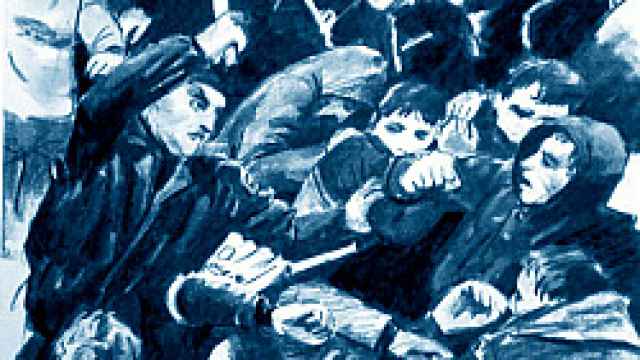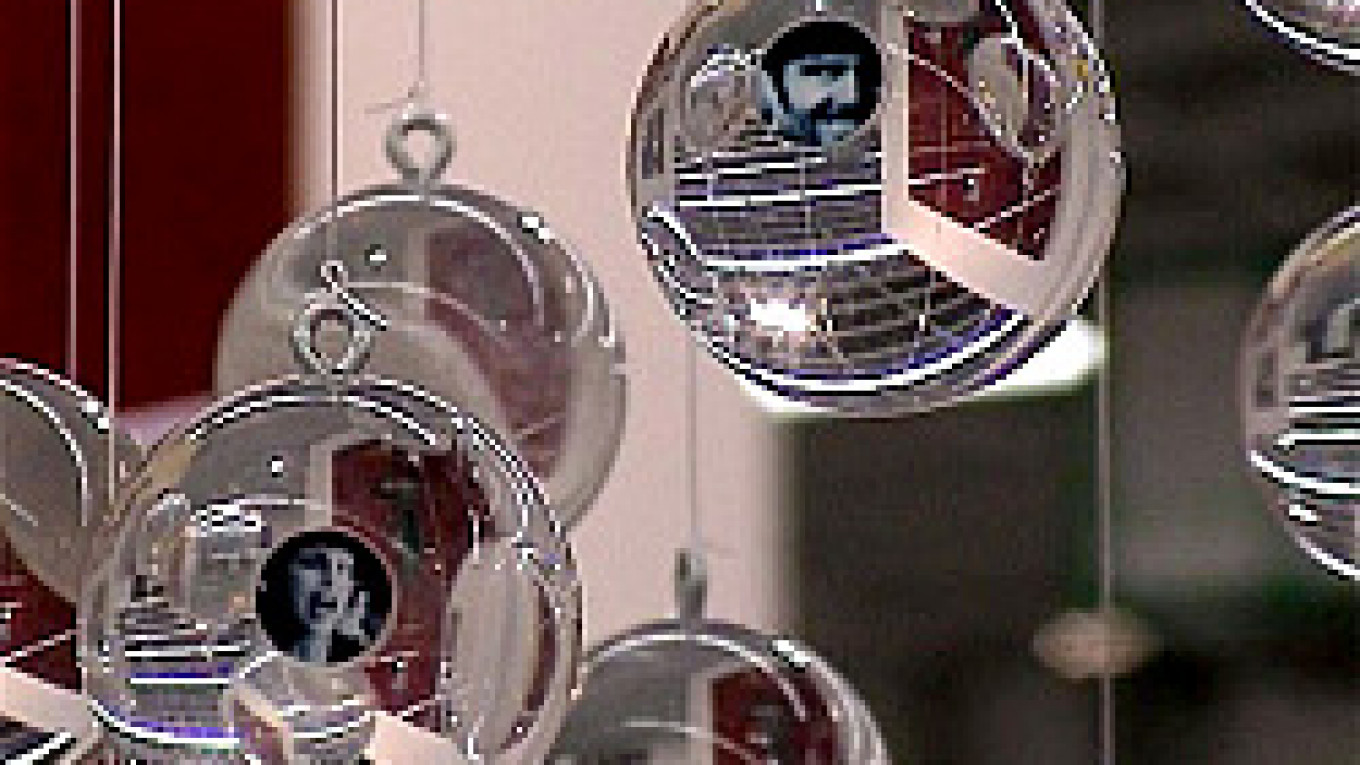Oddly enough, however, this year's Russian pavilion owed just as much to events nearly a century old as it did to the present day. It takes its title, "Victory Over the Future," from the 1913 opera "Victory Over the Sun" -- a Russian avant-garde landmark with libretto in Alexei Kruchenykh's "trans-rational" language and set design marking Kazimir Malevich's first forays into black squares and Suprematism.
But the real enemy for commissioner Vasili Tsereteli and curator Olga Sviblova was the past. The pavilion in Venice -- built a year later by Alexei Shchusev, best known as the architect of Lenin's tomb -- has been in a notorious state of disrepair for many years, with a leaky roof that until relatively recently provided shelter for homeless people and severely restricts what can be displayed under it.
"My first thought was to do a museum-style retrospective of someone like [legendary nonconformists] Erik Bulatov, Boris Orlov," said Sviblova. "But with the state the pavilion's in, you just can't show works of that quality."
Sviblova opted to continue the Russian tradition of going against the general grain and staging a group exhibition of seven artists instead of giving the space over to just one or two.
A group of Russian art critics were flown over for the opening.
"Russian art -- whatever fantastic dreams we might have about it -- is simply off the radar," Sviblova explained. "So I think the point of the national pavilion is for us to show that we have diverse artists. It's always been my strong conviction and belief that the number of square meters within which the artist makes his statement has nothing to do with the strength of that statement."

For MT
One of artist Alexei Kallima's frescos that depict a Chechen soccer crowd.
| |
Russia is, as the old slogan goes, a multiethnic country, but it was unclear how great the Chechen hand in the pavilion was. At the opening, Molotkin's installation had "Chechen crude oil" and "Blood from survivors of the Chechen war" inscribed over the statues. Rumor was that it was done without Sviblova's knowledge or approval, and on a repeat visit the walls had been scrubbed clean of them.
Downstairs was a world several centuries, away from all this. "Psychedelic realist" Pavel Pepperstein presented hallucinatory watercolors of "landscapes of the future," stretching from a Suprematist Sri Lankan autobahn in 2115 to "artificial clouds" of 3451. Next door, Gosha Ostretsov built a claustrophobic wooden room with moving mechanical hands, a life-size replica of himself scribbling out new ideas and a ringing telephone that screamed untranslatable obscenities when you picked it up.
Finally, one of the pavilion's sides hosted a Styrofoam sculpture of a motorcyclist from Sergei Shekhovtsov, bursting as if right out of the wall. Shekhovtsov was perhaps a victim of Sviblova's square meter belief. His work was originally meant to hang from the pavilion's facade but for technical reasons had to be moved around the corner; many strolling through the Giardini did not even notice that it was there.
Ignorance and indifference, still, are far better reactions than the whistles that the Futurist opera got, including whistles even from the sponsors and cries of "Send the author to the madhouse!" But Sviblova was more ambitious than that. "The important thing in Venice is the first impression," she said. "For different experts with different positions, different artists resonate one way or the other."
The show did not resonate enough with the Biennale jury to win the Golden Lion for Best National Pavilion -- this went instead to American new media legend Bruce Nauman, which was something of a fait accompli. Prizes, however, were the last things on Sviblova's mind. "I don't like presenting art like it's the Olympics," she said. "Our job is to show the artists and let the international public get acquainted with them."
A Message from The Moscow Times:
Dear readers,
We are facing unprecedented challenges. Russia's Prosecutor General's Office has designated The Moscow Times as an "undesirable" organization, criminalizing our work and putting our staff at risk of prosecution. This follows our earlier unjust labeling as a "foreign agent."
These actions are direct attempts to silence independent journalism in Russia. The authorities claim our work "discredits the decisions of the Russian leadership." We see things differently: we strive to provide accurate, unbiased reporting on Russia.
We, the journalists of The Moscow Times, refuse to be silenced. But to continue our work, we need your help.
Your support, no matter how small, makes a world of difference. If you can, please support us monthly starting from just $2. It's quick to set up, and every contribution makes a significant impact.
By supporting The Moscow Times, you're defending open, independent journalism in the face of repression. Thank you for standing with us.
Remind me later.


